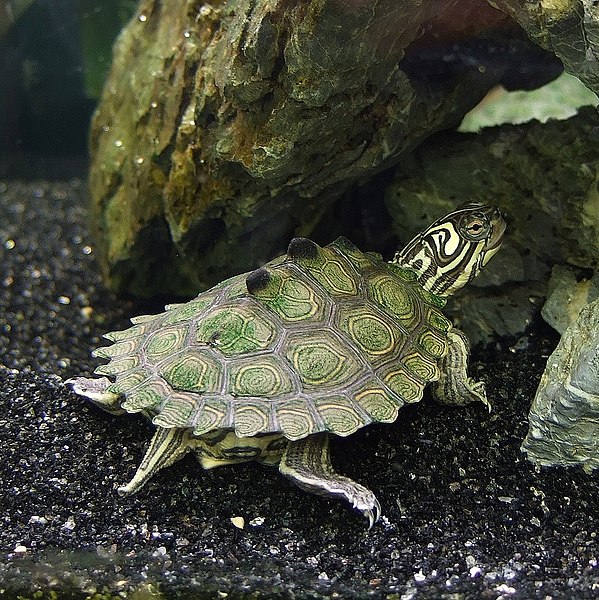 From simple, easily-cleaned habitats to complex environments, herp enthusiasts have many options when it comes to setting up terrariums for reptiles and amphibians. Today I’ll cover everything you’ll need to create an ideal habitat for semi-aquatic, basking turtles, including Red-Eared Sliders, Painted and Map Turtles, Cooters and others. With a bit of modification, your set-up can also accommodate largely-aquatic species such as Musk, African Mud, Snapping and Soft-shelled Turtles. I’ll also mention money-saving alternatives to certain products, along with non-essential “extras” that can be added if you wish.
From simple, easily-cleaned habitats to complex environments, herp enthusiasts have many options when it comes to setting up terrariums for reptiles and amphibians. Today I’ll cover everything you’ll need to create an ideal habitat for semi-aquatic, basking turtles, including Red-Eared Sliders, Painted and Map Turtles, Cooters and others. With a bit of modification, your set-up can also accommodate largely-aquatic species such as Musk, African Mud, Snapping and Soft-shelled Turtles. I’ll also mention money-saving alternatives to certain products, along with non-essential “extras” that can be added if you wish.
Enclosure
Surface area, to allow for swimming and bottom “prowling”, is a more important consideration than water depth for most species.
Recommended
The long, broad Exo-Terra Turtle Aquarium is specifically designed to meet the needs of aquatic and semi-aquatic turtles.
Traditional aquariums also make excellent turtle homes. When deciding between two styles with the same volume, choose long, low models over those with greater height.
Low Cost Alternative
Plastic bins are available in sizes ranging from small shoe-boxes to storage bins measuring several feet in length. Many work admirably for turtles, and can be equipped with filters or serviced by a quick “dump and fill”.
Bins are especially useful for large collections of small turtles, rearing hatchlings, or where filters are not used.
Basking Spots
Most popularly-kept turtles need a dry spot where they can warm up and absorb UVB radiation. Snappers and other largely aquatic species may bask on occasion, especially if the site is slightly below water level.
Recommended
 A wide variety of unique turtle basking sites, including floating and stationary models, are available.
A wide variety of unique turtle basking sites, including floating and stationary models, are available.
Penn Plax Turtle Piers (please see photo) and Zoo Med Turtle Docks are my favorites. You can also wedge Cork Bark between two sides of an aquarium, or use silicone to fasten it in place.
Low Cost Alternatives
Inverted clay flower pots and weathered driftwood both serve well as basking sites and are preferable to rocks, which may damage turtle carapaces. They will, however, take up swimming space if resting on the bottom of the aquarium.
At the Bronx Zoo, many of our turtle holding tubs were outfitted with simple, homemade wooden “basking tables” – four legs and a flat surface. These provided dry resting spots and submerged refuges, and were easy to build (well, “easy” for those with minimal carpentry skills, which I lack!).
Hiding Spots
Although seemingly equipped with a “shelter to go” most turtles prefer to have a hiding place (in addition to their shell!).
Recommended
Zoo Med Floating Logs and Penn Plax Turtle Piers serve dual roles as basking and hiding spots. Please see the article below for additional suggestions.
Low Cost Alternative
Broken clay flowerpots can be fashioned into submerged retreats. Be sure that your turtle cannot become lodged inside (some turtles grow quickly, so watch young animals closely and add larger caves as needed) and that there are no sharp edges.
Further Reading
Aggressive Basking Behavior in Painted Turtles this Herpetologica article shows the importance of good basking sites.
Black Knobbed Map Turtle image referenced from wikipedia and originally posted by OpenCage
 That Reptile Blog – Reptile, Amphibian and Exotic Pet Care and Information
That Reptile Blog – Reptile, Amphibian and Exotic Pet Care and Information


